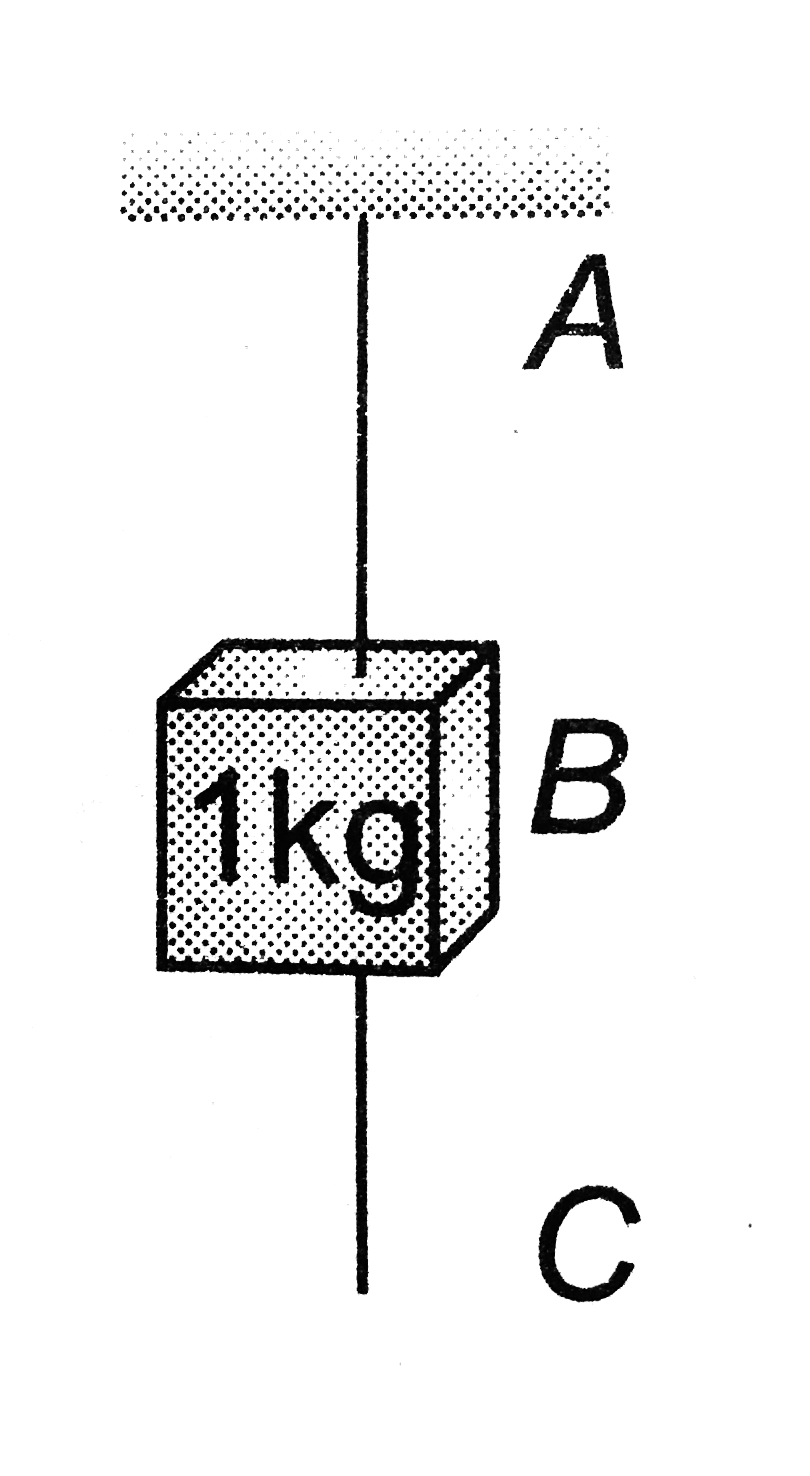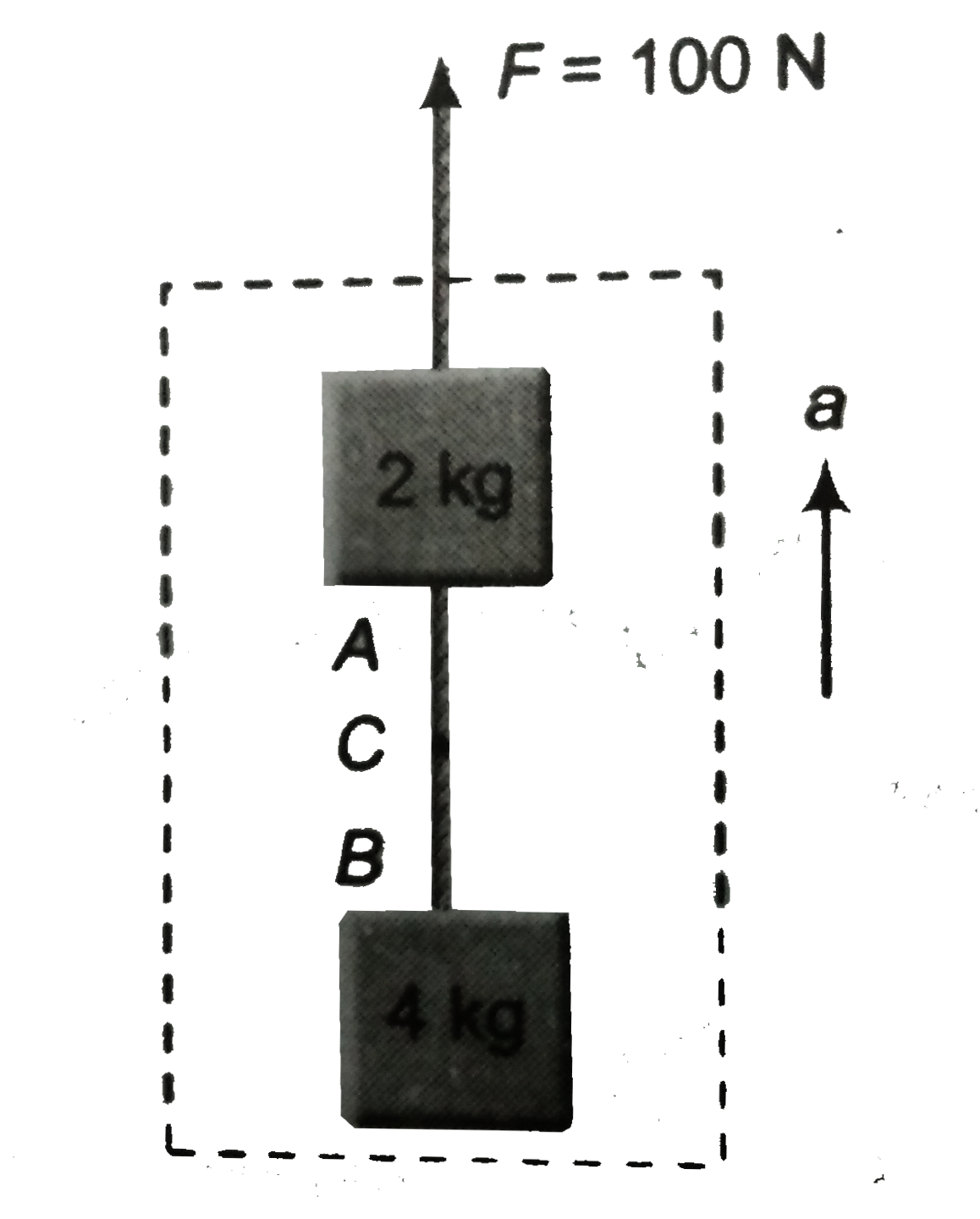A mass of 1kg is suspended by a string A. Another string C is connected to its lower end (see figure). If a sudden jerk is given to C, then

The portion AB of the string will break
The portion BC of the string will break
None of the strings will break
The mass will start rotating
The correct Answer is:B
If a sudden jerk is given to C then it will experience tension due to inertia of rest of mass M. This force will not be transmitted to the string A and so the string C will break. Hence the portion BC of the string will brea
Similar Questions
A block of mass m is suspended from the ceilling using a string C. Another piece of string D is fitted to the other end of block. When the string D is pulled suddenly, it snaps . But when D is pulled slowly. The string C snaps. Explain.
View SolutionA body of 1 kg is hung from a string A. Another chord C is installed at the bottom of this (see picture). Now if a chord is suddenly jerked, then
View SolutionThere blocks A , B, C and attached by means less strings as shwon. Thension in the string connecting B ,C is 30N, mass of A,B are 3kg , 5kg. Find the mass of the block . C and tension in the string connecting A,B.

View SolutionThe mass of the part of the string below A in figure is m. Find the tension of the string at the lower end and at A.
View SolutionIn the given figure mass of string AB is 2kg. Find tension at A,B and C, where C is the mid point of string.

View SolutionA mass of 1 kg is suspended by a string A. another string C is connected to its lower end (see figure). If the string C is stretched slowly, then
View SolutionA mass of 1 kg is suspended by a string A . Another string C it s connected to its lower end. If a sudden jark is given to C then
View SolutionIn the figure shown strings AB and BC have masses m and 2m respectively. Both are of same length l.Mass of each string is uniformly distributed on its length. The string is suspended vertically from the ceiling of a room.A small jerk wave pulse is given at the end 'C'.It goes up to upper end 'A' in time 't' .If the value of t is given by a sqrt(l/g)+b sqrt(l/g)(sqrtc-sqrtd) then a+b+c+d is
View Solution
